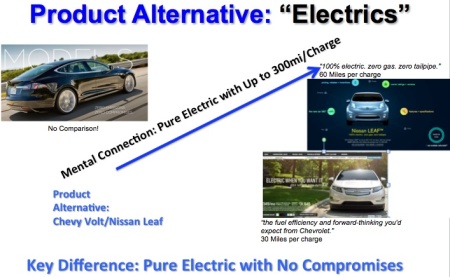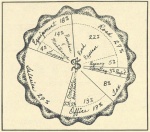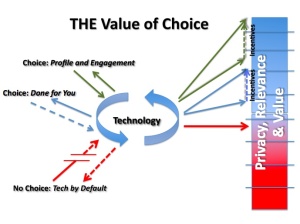Introduction
In my last post, Lessons from the Classroom, Pt. 1, I shared the journey for the Inbound in the Integrated Marketing Framework as it was unfolding, leading up to and through the first half of the semester, with all the twists and turns on the way of what truly is a different type of applied learning experience in the college classroom.
As I write this, the semester has just come to a close and I just submitted the final grades. I apologize for this posting’s length (it’s long!), but I thought it would be best to offer up the full story here for all those who have an interest in the second part of this adventure in marketing education.
The Good News!!!
First off, I am happy to report that the class as whole rose to the challenge and built out the content offers and conversion paths to meet the requirements of the Practicum component of the HubSpot Software Certification process!!!, including:
- 400 identified Keywords targeting six (6) Student Personas
- Four (4) Content Offers
- Optimized Landing Pages, Calls-to-Action, Forms, and Thank You Pages and More
- Over 30 Blog Posts
- A constant stream of Social Posts
- E-mail campaigns
- 30% Conversion Rates
- And more!
I am honored to be one of the first professors to have had this opportunity to partner with HubSpot and create for students a timely and relevant learning experience like this— one that offers some of the top marketing and communications students in the country the opportunity to not only work hands-on with current tools on the leading edge of marketing today, but also to develop a full blown Inbound campaign and earn a HubSpot’s professional software certification.
In this case, the client SafeRide can be considered a start-up seeking to differentiate itself in its own unique way, in a crowded space. They had no social presence, or established user base to work from. It’s all new. A blank canvas as it were.
It is now clear that this partnership or what I would call “hybrid” model can inject a higher level of responsiveness to the college level marketing curriculum in a manner that supports and enhances it, while also giving students practical high-value skills they can use to advance their careers immediately — one of our core goals.
The students that took this course by definition are “Pioneers,” or Early Adopters, of this hybrid style of education. Each and every one of them deserves to be called out for taking the risk and helping chart a new direction for education moving forward.
Here they are:
- Hantzley Audate
- Lindsey Di Costa
- Max Fallows
- Milo Goodman
- Sam Ho
- Amber Hughes
- Kennedy Kelley
- Nick Kitsos
- Catalina Nguyen
- Paige Niler
- Emily Schnider
- Jamie Wong
To all of them, my undying thanks for going on this ride.
And I also have to call out HubSpot’s Isaac Moche, Education Partner Program Manager, and Jon Gettle, Consultant Extraordinaire, one more time. Isaac has delivered unwavering support to the project since the beginning, and Jon’s two (2) class visits were transformative, as noted in Part I.
This experience will serve as the backbone for a curriculum guide that we will be producing, so others can adopt this program into their classes and offer up this high value opportunity to their students too!
Feel free to reach out to me through LinkedIn if you have any questions or are interested in getting the guide when completed.
And lastly, I want to recognize Dr. Brenda Wrigley, Department Chair, Marketing Communications at Emerson College, named by USA Today as one of the “Top 5 Marketing Programs in the US.” Without her vision, leadership and support, none of this would have come to pass.
The other piece of good news, is that this class is being offered to students again, in the Fall of 2017.
Bumps on the Road…
Since HubSpot Software Certification is a two (2) step process, it is essential that students, as in this case, 1. complete the Practicum requirements as a team, and 2. take the HubSpot Software course and pass their administered test, individually. Each student has to pass the test on their own first, and then submit the class’s collective Practicum achievements to HubSpot on their own in order to earn HubSpot Software Certification. This time around, the due date for taking and passing the test was the official last day of class. At that point 6 out of 12 had passed.
Students have to do their work through the client’s HubSpot portal as Authorized Users on the account, so students are also required to submit the required Practicum “achievements” through the client company’s portal. I didn’t realize at the outset and see now that the client should not and cannot be expected to carry student users once the semester ends.
In the end, it looks like nine (9) out of twelve (12) students have taken and passed the certification course and are therefore entitled and allowed to submit Practicum for full certification. Two (2) certifications have already been processed and awarded, with more to come.
I found that I had to work with SafeRide to extend the deadline for one (1) week to make sure every student has the opportunity to do this. It is clear now that the Practicum is an all consuming event and that having the deadline of taking and passing the Certification Test along with Practicum at the end of semester assignment is unrealistic.
I am addressing this disparity in the Course Design Recommendations section below.
Lessons Learned…
Now that we have gotten this out of the way, I thought it is would be useful for those of you who are Marketing Professors (Grad or Undergrad), Marketing Students or just plain interested to share lessons learned.
1. The Work
First off. This is an applied, hands-on course. It’s intense! There are individual and team components. In the final analysis, however, it comes down to doing the work. This is inescapable and can’t be understated.
There really is nowhere for students to hide when it comes to going through the Practicum process AND doing the work. It’s a team effort and everyone needs to contribute.
2. Culture Matters
As I also talked about in Part I, becoming conscious of Culture is one reason I embrace the “flipped” learning method, and giving students the full responsibility to “own” the project. It is so clear that for full learning value, students have to figure this stuff out on their own to really get it, and to understand for themselves how to function at their full potential in a world as the young, confident and competent professionals they are.
This is especially important if they are to function at a high level in a world where very often they are simply given a business problem to solve, or a goal to achieve, and expected to do it, and do it well. Some call this getting thrown in “the deep end of the pool,” and the best ones come up for air and figure it out… fast.
This was especially manifest clear during the final push to get the Content Offers and Conversion Paths operational. In typical form, some of the Content Offers were, for no real fault of anyone’s, late. Some of the deliverables that were built by students earlier in the semester, and which the Conversion Path Team assumed were ready to go, were not, and so on.
This meant that everyone in the class needed take an “all hands on deck,” and “get it done NOW” posture. The students that rose to the occasion, and a number of them did, wound up finding and internalizing this “whatever it takes” spirit, and in doing so transformed themselves from talented students into A-Players and even Rock Stars. These folks are now able to bring this spirit into the Culture of the organizations they go on to work for or with.
They also now know that in fact A-Players like to work with other A-Players, and Why!
By the way I am firm believer, and my teaching life has confirmed that A-Players are not born, but learn to be, and that one of our roles as educators is to be on the lookout for and use transformational learning opportunities to guide this development. And as I saw time and again, there can be no doubt that a class like this will reveal them.
3. Course Design Adjustments
In relation to the course design—as I shared in Part I of this post—I adopted what I would call “free-form” approach to the design that was organized around the Practicum as the central pillar. Taking lessons learned, below are some of the adjustments to the course design I will be making for course next Fall.
First, I learned that it is very important to get everyone up to speed with Inbound and HubSpot right from the start, and set aggressive deadlines in the first weeks.
A. Inbound Certification Course
This provides the conceptual Inbound Methodology and Framework and all students need to have this under their belts right from the start.
- Watch Course Videos
- Take Test
- Pass Test
- Submit Proof
For: Everyone
Assigned: Week #1
Due: Week #3
B. HubSpot Software Certification Course
This provides tactical and tool-based knowledge that we learned students need earlier in the semester, both to better address tackling the Practicum requirements, and prevent students from having to cram for the test at the end of an intense Inbound campaign execution process.
- Watch Course Videos
- Take Test
- Pass Test
- Submit Proof
For: Everyone
Assigned: Week #1
Due: Week #7
NOTES:
- Week seven (7) represents the midway point of Emerson’s 14-week semester.
- Taking AND passing the test at this time can serve as a required midterm “test.”
C. Persona, Content Offer, Landing Page, Call-to-Action Activities, and Assignments
To extract maximum value, each and every student needs to not only go through the course, but also “get their hands dirty” with the HubSpot tools themselves. I will also be embedding these individual assignments and activities in the first half of the semester.
Pt. 1. Personas and Content Offer
Students will be given the assignment to define personas and suggestions for possible content offers (with titles): ToFu (Top of Funnel), MoFu (Middle of Funnel), and BoFu (Bottom of Funnel). Sorry for the jargon!
Due: Week #3
NOTEs:
- These will be shared in class, and the best suggestions voted upon.
- Content Offer mini-teams will be established to create them, with deadlines set by them.
- Other functional teams aligned with Practicum begin here.
- Program Management/Weekly Reports begin on Week #4.
Pt. II. Landing Page, Call-to-Action with Form and Thank You Pages
Each student will be tasked to with building a Landing Page, Call -To-Action with Form, and Thank You Page all on within HubSpot.
Due: Week #5
NOTE: This assignment is core to the “Flip” and will also set up the HubSpot expert’s in-class visit. Students will share their work and the Guest will be available to review the work, and address any questions or issues that students have been struggling with.
D. Program Management
All marketing professionals know the value and apply program management to the work we do, as a matter of course. In this context, it was amazing to watch students to respond to this need and figure out how to organically bring a sense of stability and order, organically. It took a while, but in retrospect, would be useful to call out and speed up.
In the end, one highly gifted student rose to the challenge and took the lead to develop a Project Tracker using Google Sheets (spreadsheet), which was open and available to everyone in the class. She also assumed the Project Management function organically and was shared with another Rock Star, whose job then was to align and optimize the key words and then post the content.
Program Management to Begin Week #4 or thereabouts.
Features Include:
- Use to foster Cross Team Collaboration.
- Breaking down the class into Functional Teams Organized by Practicum
- Use to Highlight Weekly Work Updates and Reviews with Full Class
- Apply Discovery Meeting Style with “Show and Tell” by all
- Define Assign & Track Weekly Progress and Accountability
- Use Tracker to Organize Project
Please feel free to reach out for more information on course design.
Final Thoughts
The first time with a new course like this always poses some challenges and risks for the professor, and there clearly have been many all along the way, which I have done my best to share with you.
There also is no doubt that marketing and communications are undergoing a digital transformation, and an (r)evolution that is moving very fast.
This presents colleges and universities today with the not insignificant challenge of offering current and relevant learning experiences in a time of transformation and change.
So can this type of partnership or hybrid model work collaboratively with the status quo of the curriculum? And does the combination of the two yield a meaningful result for students?
It’s clear to me that hybrid courses like this represent the future of marketing education, and offer one (1) path to solve this synthesis that is both timely and relevant. This class has proven to me without doubt that hybrid courses can be designed to magnify the best of both… a tried-and-true curriculum that provides the foundation, context and frameworks, together with hands-on learning and application of latest and greatest tools all applied to solve a real world business problem.
Here is what some of the students say…
I really love that we were able to dive into the software and that no features were off-limits… this is the only class where I genuinely feel I’ve gained job-ready knowledge and skills in one semester. I’m proud to have this program on my resume and in cover letters. – Paige Niler
My favorite part of the project was learning how to use the HubSpot software and then immediately going to the tools and figuring out how to create content and pages with my own writing and edited work. – Emily Schnider
It really gave me confidence in my ability to use what I’ve previously learned and frame it in ways that have enabled me to succeed. – Catalina Nguyen
I’m really pleased that I was able to learn to use every aspect of the software in this project, as I’m sure this will apply to my future marketing career. – Milo Goodman
The hands-on nature of using HubSpot, particularly with this class, was extremely liberating in terms of working with a client and a classroom environment. – Amber Hughes
My perspective on marketing has changed after taking this course. I used to see inbound as a way to support outbound but now I see them both as equally important when doing an integrated marketing campaign. – Lindsey Di Costa
Before, I was so focused on outbound because that’s what was taught to us. With inbound, we can do more with less and it’s a game changer. – Hantzley Audate
Teacher’s Thoughts…
The process was by no means perfect. And there is no doubt that some students gave more to the project than others, and got more out of it as a result. Every student got a new sense of the possibilities ahead of them, and experienced (or not) for themselves what it takes to make it so.
Many who were initially reluctant or intimidated, jumped in with the help of Jon Gettle’s strategic visits in particular, and in doing so transformed themselves from students who were used to external guidance and spoon fed projects, into real A-Players, adopting a “get it done no matter what” mind-set to overcome each and every obstacle thrown their way.
And some of Rock Stars emerged as well, students who were able to pull it all together and “drive the bus” and lead, without prompting from me. Totally awesome!
This happened right in front of my eyes, which is one of the fundamental reasons we as teachers do it.
The bottom line is that each member of the class overall has been offered the opportunity to enter the workplace HubSpot Software Certified. Most will make it, and in doing so will benefit by a low supply of trained talent and large demand by companies and agencies that need their newly minted HubSpot talents, fine-tuned marketing skills, and professional work ethic.
So to address the question again is, is this “hybrid” type of course worth doing? Yes!
Would (and will) I do it again? Yes!
And do I encourage other professors to bring partner with HubSpot to bring HubSpot Software Certification into their curriculum? Yes! Without reservation.
Final Comments to the Students of MK371…
You are pioneers. Who else would be willing to sign up for a brand new 4-hour class from noon to 4:00 pm on a Friday afternoon? You are all also trendsetters and I am truly grateful to you for taking this course on.
You have not only turbo charged your skills and opened a whole new set of opportunities for yourselves, you have also helped light up the path for a different approach to marketing education that will in no small measure benefit other students that most surely will follow in your big footsteps.
Supporting Materials
If you are a professor considering an Inbound course for either the undergraduate or graduate level, and have any questions, by all means reach out. I am happy to share what I have learned to help spread the word.
I invite you to check out the Course Wrap Up deck, and the Know Your Rights Guide, one of the awesome evergreen content offers developed by this team to give you an idea of what students at this level are capable of.
I will also be happy to share my revised syllabus for next semester with all the adjustments noted in this article. Again feel free to reach out to me through LinkedIn or at randy_harrison@emerson.edu, and I will send you a copy later this spring/summer.




















